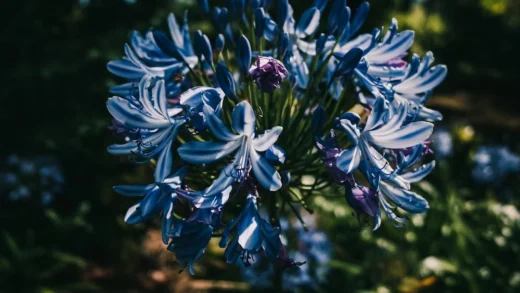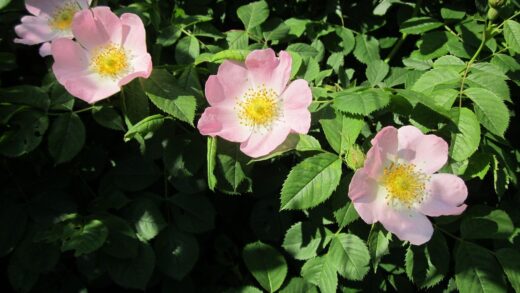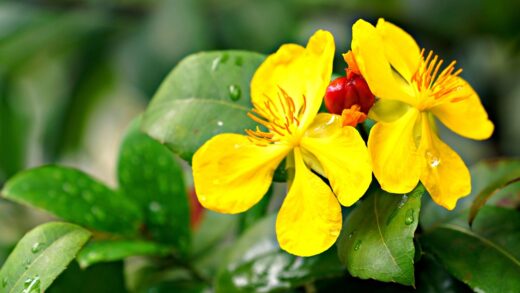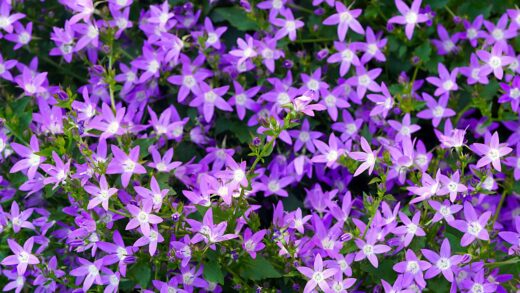While the Scots pine is a hardy and resilient species, it is not immune to a range of diseases and insect pests that can affect its health and appearance. A vigilant and informed approach to monitoring the tree is the best defense, as early detection is key to effective management. Most problems are more likely to occur when a tree is stressed due to improper planting, poor site conditions like inadequate drainage or lack of sunlight, or environmental factors such as prolonged drought. By understanding the common threats, recognizing their symptoms, and employing integrated pest management strategies, you can minimize potential damage and maintain the vigor and beauty of your Scots pine. The focus should always be on prevention and creating a healthy growing environment, which is the foundation of a disease- and pest-resistant tree.
The health of a Scots pine is a direct reflection of its growing conditions. A tree planted in its preferred environment—full sun, well-drained acidic soil, and good air circulation—will be inherently more vigorous and better able to fend off opportunistic pathogens and pests. Conversely, a tree struggling in compacted, wet soil or in the shade will be chronically stressed, making it a prime target for a host of secondary problems. Therefore, the first line of defense is not a spray bottle, but a shovel and a site assessment. Ensuring the fundamental needs of the tree are met is the most effective preventative measure you can take.
Fungal diseases are among the most common issues affecting Scots pines, particularly those that impact the needles. Diseases like needle cast and tip blight thrive in damp, humid conditions with poor air circulation. These pathogens cause needles to discolor, develop spots or bands, and drop prematurely, leading to a thin, sparse canopy. While they rarely kill a mature tree outright, repeated defoliation can weaken it significantly over time, making it more vulnerable to other stressors and insect attacks. Management of these diseases often focuses on cultural practices that promote faster drying of the foliage.
Insect pests can also pose a significant threat, with some feeding on needles, others boring into the trunk and branches, and some attacking the roots. Pests like the pine sawfly can cause rapid and dramatic defoliation, while scale insects and aphids can weaken the tree by sucking sap from its tissues. Bark beetles and borers are particularly dangerous, as their tunneling activity can disrupt the tree’s vascular system, potentially girdling and killing branches or even the entire tree. Regular inspection of the trunk, branches, and needles is crucial for spotting the early signs of an infestation.
Common fungal diseases
One of the most prevalent groups of diseases affecting Scots pine is needle cast, caused by several different species of fungi, such as Lophodermium and Cyclaneusma. The symptoms typically begin with the appearance of yellow or brown spots or bands on the needles, often starting with the older, inner needles. These infected needles will eventually die and be “cast” or shed from the tree, usually in the spring or early summer of the following year. This premature needle drop, if severe and repeated over several years, can lead to a very thin and unhealthy-looking tree, reducing its ornamental value and overall vigor.
More articles on this topic
Dothistroma needle blight is another serious fungal disease that can impact Scots pines, particularly in plantation settings or in landscape plantings where trees are closely spaced. This disease causes reddish-brown bands to form on the needles, with the needle tip beyond the band dying off while the base remains green. Over time, the entire needle will die and fall off. The infection typically starts on the lower branches and gradually moves up the tree. The fungus spreads via wind and splashing rain, making it particularly problematic during wet spring and summer weather.
Sphaeropsis tip blight, also known as Diplodia tip blight, is a disease that primarily affects the new, emerging growth in the spring. It infects the developing candles and young needles, causing them to become stunted, turn brown, and die, often with a tell-tale resin oozing from the base of the dead shoot. The dead shoots and needles remain on the tree, giving it a blighted appearance. This disease is particularly aggressive on trees that are under stress, especially from drought or poor site conditions. The dead tips can be pruned out to reduce the amount of fungal inoculum.
Management of these fungal diseases relies heavily on cultural practices. Providing adequate spacing between trees to ensure good air circulation is crucial for allowing the foliage to dry quickly after rain. Raking up and destroying fallen needles can help to reduce the amount of fungal spores that can re-infect the tree in the following season. In cases of severe or persistent infection, fungicide applications may be necessary. These need to be timed correctly, typically in the spring as the new needles are emerging and expanding, to protect them from infection.
Needle cast and blights
A deeper understanding of the life cycle of needle cast fungi is essential for effective management. These fungi typically produce their spores on the infected needles that have fallen to the ground or are still attached to the tree. During periods of wet weather in the spring and summer, these spores are released and spread by wind and rain to infect the new, developing needles. However, the symptoms of the infection often do not become visible until many months later, in the autumn, or even in the spring of the following year. This delayed appearance of symptoms can make the diseases challenging to diagnose and manage proactively.
More articles on this topic
Preventative measures are the most effective strategy against needle cast and blights. The most important step is to ensure the tree is planted in a location with full sun and excellent air movement. A crowded planting or a site with stagnant air creates a microclimate with high humidity around the foliage, which is the perfect environment for these fungi to thrive. Pruning out the lower branches of the tree, if necessary, can also help to increase air circulation into the lower canopy where these diseases often start.
Proper sanitation is another key cultural control. In the autumn, after infected needles have been cast, it is important to rake them up from under the tree and destroy them by burning or burying. This action removes a significant source of fungal spores that would otherwise overwinter and cause new infections the following spring. For tip blights, where the dead shoots remain on the tree, pruning out these blighted tips during dry weather can also help to reduce the amount of inoculum present in the canopy. Pruning tools should be disinfected between cuts to prevent spreading the disease.
For high-value specimen trees that have a history of severe infections, preventative fungicide applications can be an effective tool. However, chemical control must be timed precisely to be successful. Sprays need to be applied in the spring to protect the new, vulnerable needles as they are emerging and elongating. Depending on the specific disease and the fungicide being used, multiple applications may be required throughout the spring and early summer. It is essential to get an accurate diagnosis of the specific disease to select the most effective fungicide and to follow the label instructions carefully.
Key insect pests to monitor
The European pine sawfly is a common defoliating pest of Scots pine. The larval stage of this insect, which resembles a caterpillar, feeds in large groups on the needles. They have a voracious appetite and can strip the needles from entire branches in a very short period. They typically feed on the older, second-year needles, leaving the new growth at the tips of the branches untouched. While a healthy, mature tree can usually withstand a single season of defoliation, repeated attacks can weaken the tree and make it susceptible to other problems. The larvae can be physically removed by hand or dislodged with a strong jet of water if the infestation is small.
Pine needle scale is a sap-feeding insect that appears as small, white, oyster-shell shaped bumps on the needles. These insects insert their piercing-sucking mouthparts into the needles and feed on the plant’s fluids. A heavy infestation can cause the needles to turn yellow and drop prematurely, and can lead to branch dieback. The immobile adult scales are protected by their waxy covering, but the newly hatched “crawler” stage in the spring is mobile and vulnerable. Horticultural oils applied during the dormant season or targeted insecticides applied during the crawler stage are the most effective controls.
Aphids are another common group of sap-feeding insects that can be found on the new shoots and needles of Scots pines. While a small population is unlikely to cause significant harm, large infestations can lead to yellowing foliage and distorted new growth. Aphids excrete a sticky substance called honeydew, which can coat the needles and lead to the growth of a black, sooty mold. This mold is not directly harmful to the tree but is unsightly and can interfere with photosynthesis. Aphids can often be managed by encouraging natural predators like ladybugs and lacewings, or by spraying them with insecticidal soap.
Bark beetles and borers represent the most serious insect threat to Scots pines. Beetles like the pine shoot beetle and various species of Ips engraver beetles tunnel into the bark and the wood of the trunk and branches. This activity can disrupt the flow of water and nutrients, effectively girdling the affected part of the tree. Stressed trees, particularly those suffering from drought, are much more attractive to these pests. The presence of small holes in the bark, fine sawdust-like frass, and significant branch dieback are signs of an infestation. Management is very difficult, and prevention through maintaining tree health is the best strategy.
Integrated pest management (IPM) strategies
Integrated Pest Management, or IPM, is a holistic and sustainable approach to managing pests and diseases. It prioritizes prevention and uses a combination of different control methods, with chemical pesticides being used only as a last resort. The foundation of any IPM program for Scots pine is to maintain optimal tree health and vigor through proper site selection, planting, watering, and nutrient management. A healthy, thriving tree is naturally more resistant to pests and diseases and more resilient if an attack does occur.
Regular monitoring is a core component of IPM. This involves routinely inspecting your trees for the early signs and symptoms of any problems. By catching an infestation or an infection in its early stages, you have a much wider range of management options available, and the chances of successful control are much higher. For example, a small colony of sawfly larvae can be easily pruned out and destroyed, whereas a large, widespread infestation may require a chemical intervention. Keeping a record of your observations can also help you anticipate problems that tend to occur at certain times of the year.
IPM emphasizes the use of biological and cultural controls first. Biological control involves conserving and encouraging the natural enemies of pests, such as predatory insects, spiders, and birds. You can support these beneficial organisms by avoiding the use of broad-spectrum insecticides and by planting a diversity of flowering plants that provide them with nectar and pollen. Cultural controls are the horticultural practices that reduce pest and disease pressure, such as raking up fallen needles, pruning out diseased branches, and ensuring good air circulation.
When other methods are insufficient and a pest population reaches a level that could cause unacceptable damage, IPM allows for the targeted use of pesticides. However, the emphasis is on selecting the least toxic and most specific product available for the target pest. For example, using a horticultural oil or an insecticidal soap is preferable to a broad-spectrum neurotoxin. The application should be timed to be most effective against the pest’s most vulnerable life stage, such as the crawler stage of scale insects. This targeted approach minimizes harm to non-target organisms and the environment.
Preventative measures and treatments
The most effective “treatment” for diseases and pests of Scots pine is prevention. This begins with planting the right tree in the right place. Selecting a sunny, open location with well-drained, acidic soil will prevent the vast majority of stress-related problems that invite opportunistic pests and pathogens. It is also wise to purchase nursery stock from a reputable source to ensure you are starting with a healthy, disease-free tree. Before planting, inspect the tree carefully for any signs of insects or disease.
Maintaining good sanitation in the garden is a simple yet powerful preventative measure. Regularly remove any dead or diseased branches from the tree. In the autumn, rake up and dispose of fallen needles, especially if the tree has had a history of fungal needle diseases. This reduces the amount of pathogen inoculum that can overwinter and cause new infections in the spring. Keeping the area around the base of the tree free of weeds and debris also eliminates hiding places for insect pests.
Proper watering and mulching also play a crucial role in prevention. Water new trees deeply and consistently to promote a strong root system. Avoid overwatering established trees, as waterlogged soil is a primary cause of root rot. When you do water, apply it to the soil, not the foliage, to minimize the time the needles are wet. A layer of organic mulch over the root zone helps to conserve moisture, moderate soil temperature, and prevent mechanical damage to the trunk from mowers, all of which contribute to a less stressful environment for the tree.
If treatment becomes necessary, it is essential to first get an accurate diagnosis of the problem. A misidentified pest or disease will lead to the use of the wrong control measure, which will be ineffective and a waste of time and money. You can consult with a local horticultural extension service or a certified arborist to get help with identification. Once the problem is identified, you can select the appropriate treatment, whether it is a cultural practice like pruning, a biological control, or a carefully selected and properly timed application of a fungicide or insecticide. Always read and follow the label directions of any pesticide product.
📷 Arnstein Rønning, CC BY 3.0, via Wikimedia Commons


















